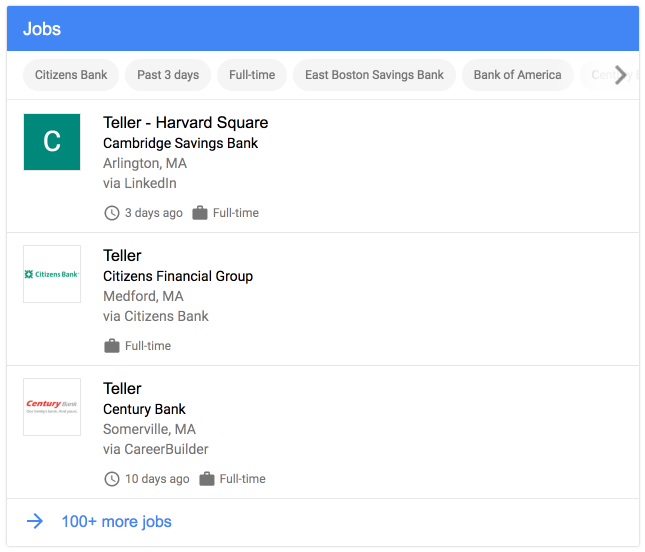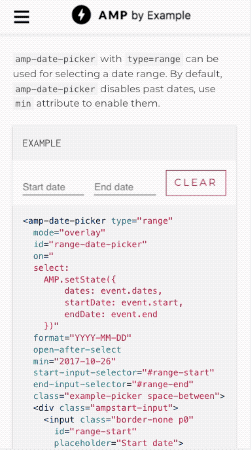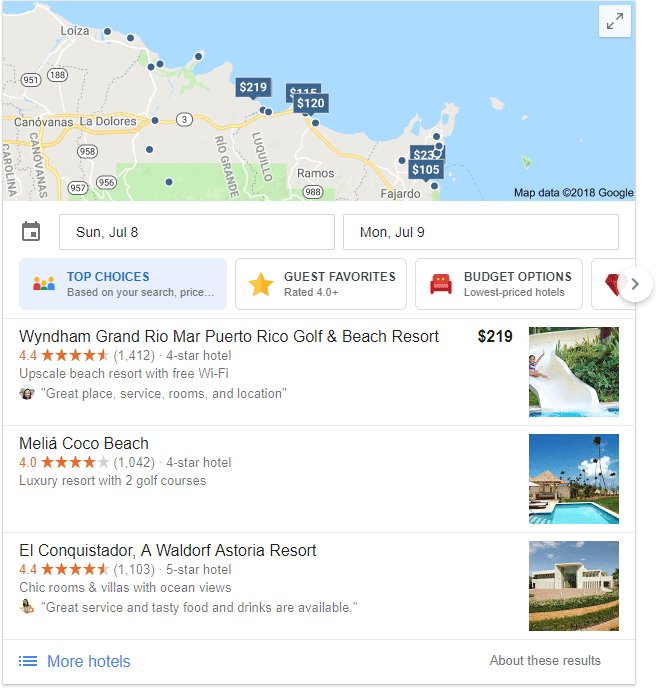With the World Cup in full swing and the summer having firmly made its mark across the Northern Hemisphere, updates are a little thin on the ground this month, but there are still a few nuggets worth taking a few minutes to read over for June.
Google Updates
Introducing Indexing API for Job Postings
After connecting millions of users to jobs over the past year, Google has announced a new Indexing API that will allow webmasters to index positions that have been filled. The new functionality is only available in selected countries for now.
Discussing the new feature on 26 June, Google says that it now allows any site owner to directly notify the search engine when job posting pages are added or removed. The web page must have the JobPosting schema, as covered by Google’s JobPosting help page.

This also allows Google to schedule fresh crawls and should create a greater quality of traffic and reduce stale listings.
The Job Posting API can be integrated into a user’s job posting flow, which will allow for postings to be searchable soon after they are published.
Webmasters can also check the last time that Google received a notification for specific URLs.
Although the Job Posting API is not available in the UK yet, the API has been published in a production state. Businesses should be preparing their workflow for the integration.
Google has made a strong statement not to abuse the API, otherwise the business could be subjected to a manual penalty:
“Warning: If your site violates one or more of these guidelines, then Google may take manual action against it. Once you have remedied the problem, you can submit your site for reconsideration.”
AMP Date-Picker is Launched
On 6 June AMP Project announced the launch of amp-datepicker, a calendar-style interactive date picker that allows webmasters to specify single dates or ranges with a calendar interface. Date constraints are popular with many industries, such as events and travel.

We should expect an amp-time-picker and amp-datetime-picker in the near future.
The expansion of constrained AMP functionality provides industries to rethink their AMP strategy. It’s no longer just just news that can benefit from AMP. We’ve seen Stripe move to iframes with their V3 payment processing (great for PCI compliance too). AMP supports the majority of core functionality for most sales/front end based websites.
Take one URL per template and find out what functionality is a must for that web page to serve its function. Do you have any competitors that are using AMP? How much will it cost to develop a second view of the web page with the AMP constraints?
Search Console Data For Web Light Results
On 14 June Google Webmasters announced on Twitter that Google Search Console now shows webmasters how often Web Light search results are served to users within the Performance Report.
By going into the “search appearance”, webmasters can now see a filter for Web Light results.
Web Light allows users to access pages while using slow mobile networks, offering the most relevant content and a link to view the original page. It is worth noting Web Light pages are not the same as Accelerated Mobile Pages (AMP). AMP already has strict implementation and size requirements, so Web Light is taking it even further.
Although site owners cannot create their own Web Light pages, they can however view what their pages would look like, which may be an important if your site happens to get a lot of impressions through Web Light pages. The Web Light guide has a good amount of questions/answers to help webmasters decide if they should allow Web Light or disable it.
Unfortunately, it is yet another way on top of AMP, that businesses need to worry about their brand identity. This could be subcontext for pushing businesses towards AMP.
Webmasters preview a Web Light version of a page on a mobile device by following a URL: https://googleweblight.com/i?u=https://merj.com
If for any reason you do not want your pages transcoded into Web Light, set the HTTP header Cache-Control in the page response headers.Cache-Control: no-transform
It’s possible to concatenate multiple Cache-Control HTTP response headers:Cache-Control: no-transform, public, max-age=31536000
Search Console URL Inspection Tool
Writing in the Webmaster Blog, Google announced on 25 June that it had began rolling out a new URL inspection tool within the new Google Search Console.
This allows webmasters to view crawl, index, and serve information about pages directly from the Google Index.
By entering a URL, users can now learn of its last crawl date and status, as well as any errors that the search engine might have encountered.
The inspection tool also shows webmasters why particular pages might not have been indexed and includes information regarding noindex robots <meta> tags and Google’s canonical URL for the page.
The search bar requires a fully qualified URL, which seems strange, given that the profile has the scope context. One would expect a URL path to work just as well, i.e. /blog
The good news is that now it’s possible to see the exact HTML markup that Google downloaded.
We would like to see the following features to really give some power:
- Provide HTTP Headers.
- Provide API access to page level reporting.
- Autocomplete URLs (or allow absolute paths).
Monitor key business pages for HTML markup changes. Using a diff tool allows one to see the difference in HTML markup before and after JavaScript has been applied. Any problems with index coverage could be due to JavaScript errors.
Identify one URL per page template and pass them through the lighthouse CLI. Fix all DOM JavaScript errors to ensure the DOM structure is not breaking.
Search Console API – 16 Month Data
Taking to Twitter, Google Webmasters announced on 18 June that those using the Search Console Search Analytics API will now have the same 16 months of data, as provided in the UI.
It was briefly mentioned that the API would eventually receive access to the data, when the new Google Search Console was unveiled in January.
Consider storing the data for longer periods of time to allow multi-year on year. It can be useful for identifying trends over longer periods of time*.
*Need help with storing the data for all your market profiles? Get in touch and use our data processing warehouse.
Dynamic Filters for Local Pack Results
On June 25 Sergey Alakov tweeted, saying that he had searched for the “best bar within 223m open now” and was presented with a dynamic “within 233m” button within his filters.
This indicates that if a user searches for something specific within their query (such as distance), Google is now able to offer dynamic filter buttons within a pack so that users can select and modify the results they are presented.
Local packs help users find information that Google thinks is most relevant to them, which is determined by their geographical location and takes the form of three results that are accompanied by a map.
These positions are highly coveted in local search, as they can direct high quality traffic to a site, so it’s important that a business provides accurate and up to date contact and location information.
Interestingly, Google has also started to present dynamic business queries based on query.
Testing Hotel Carousel Features
Dr. Peter Meyers (“Dr. Pete”) reported via Twitter on 23 June that he had noticed that Google had began testing new features on local hotel and resort packs.

Aside from the usual information, Dr. Pete noticed that Google had added buttons for “Top Choices”, “Guest Favorites”, and “Budget Options” among others.
Although it is not clear if the new options are paid or organic, we know that Google tends to blend the listings in advanced hotel search features.
Augmented Reality for the Web
After showing off the possibilities of augmented reality at Google I/O, Google has now enabled Chacmool, its educational web experience demo, on Chrome Canary.
According to Google: “The Chacmool AR experience is centered around education, leveraging AR’s immersive and interactive nature to help users learn about ancient Chacmool sculptures. Users can place a life size statue in their reality and move around to see the sculpture from various different angles and distances.”
To enable the demo, users will need to install ARCore, and also relies on a new WebXR proposal.
This means that the demo will stay in Canary as the new API proposal is refined and tested with other members of the Immersive Web Community Group.
Steve Macbeth from Microsoft was interviewed by Martha van Berkel on Connecting Virtual Reality Through Schema.org.
Can your business make use of augmented reality? We believe this is going to make an impact for how consumers expect to interact with products in 2019/2020+. This will be especially interesting around clothing, cosmetics and home.
Yandex Updates
Turbo Pages Now Customisable Through CSS
After receiving requests from webmasters for some time, Yandex has now released an update which allows webmasters to influence the appearance of Turbo pages, which can be done through CSS.
Specifications can be selected in the “Turbo Pages Settings” of Yandex.Webmaster.

This means that webmasters can select a range of settings including backgrounds, fonts, buttons and paths.
In allowing webmasters to modify their turbo pages through CSS, Yandex has put in place the following restrictions to prevent the web page becoming slow:
- Do not use third-party fonts.
- Do not add low-performance animation.
- Do not work with selectors by the names of HTML elements, for example:
.awould not be acceptableawould be acceptable
- Do not load data from external resources, for example:
.page
It’s not yet understood if the restrictions are a guide or enforced.
Create a custom CSS file for core design features. Use a CSS linter to ensure the markup is valid and minify before uploading to Yandex.Webmaster.
Updated business photos leads to higher conversions
Writing on the Yandex Blog for Webmasters, the search engine has stated that good quality photographs in the cards of organisations in Yandex.Spravochnik (Business Directory) can increase user interest by 10%.
With this information at hand, Yandex has improved the ways in which business cards work.
This means that business card photographs are now ranked in attractiveness for users, which are ranked and assessed by “computer vision”.
When it comes to Business Directory, the search engine uses pairwise comparisons of illustrations for training and quality control of the algorithm, which should increase the attractiveness of organisations on maps and other services.
That said, if a webmaster does not like the choice of photograph, through Yandex.Register, they can conduct an experiment by putting forward their own photograph and comparing the results.
Pictures can be tagged, so that users have a greater understanding of what might be happening within them.
Additional Reading
Chrome on Android Changes to Add to Home Screen Behavior
As of Chrome 68 for Android, a mini-footer will be added to the web page. The user will need to click the mini-footer, which pops up a modal for further consent. The mini-footer can be dismissed for up to three months at a time. An early concept of the install button in the omnibox is also being tested out.
Content Security Policies
Web applications rely on third-party dependencies, which can potentially cause harm by injecting arbitrary JavaScript. Content Security Policies (“CSPs”) help to allow specific files and sources by implementing a whitelisting policy. Not all JavaScript can be external, and there are some great pieces of advice for using a unique nonce for <script> elements. Read the guide on getting started with CSP.
